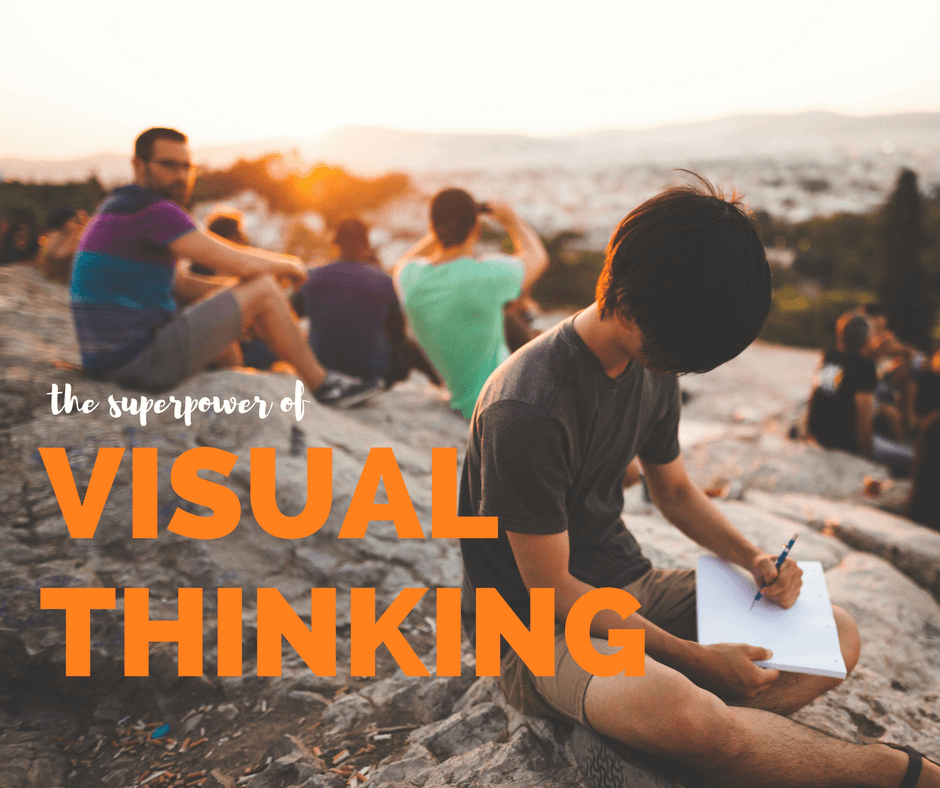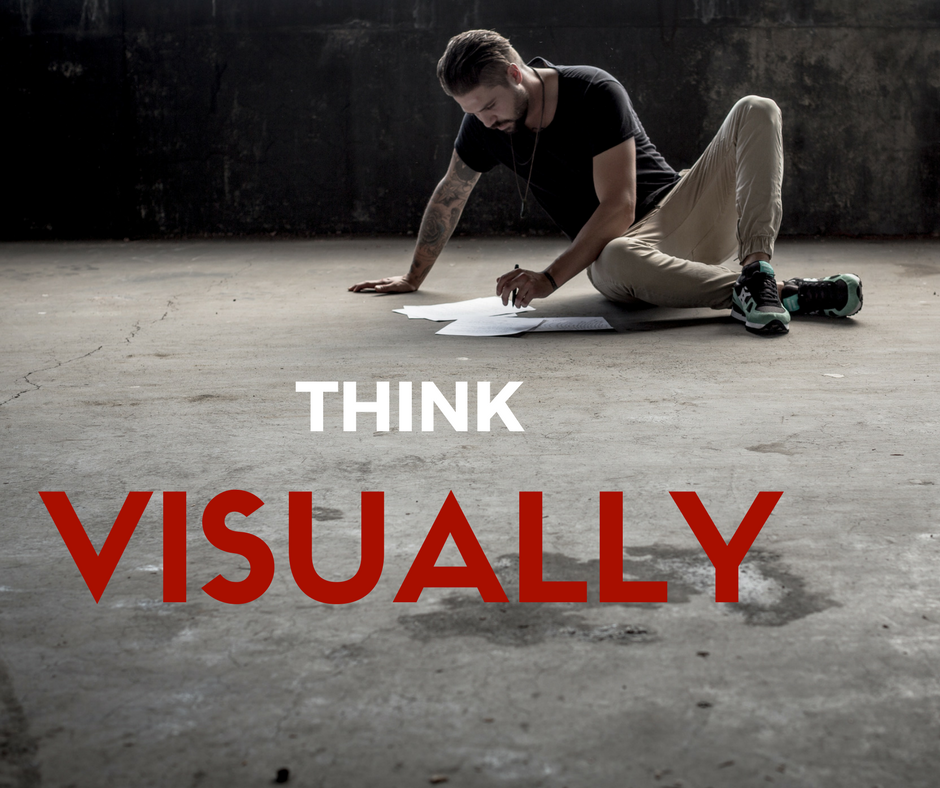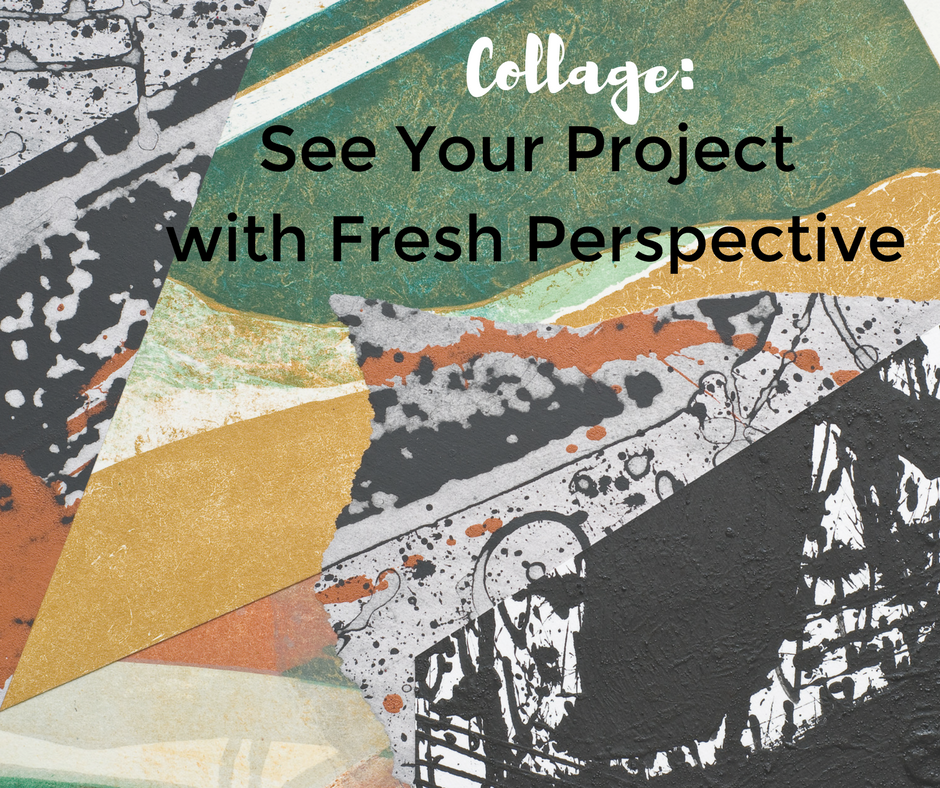by Naomi | Apr 27, 2017 | Creative Life
Have you heard of the
Napkin Academy? It’s a visual thinking online course by Dan Roam, author of
The Back of the Napkin and other insightful books. If you’re interested in significantly raising the quality of your thinking and learning life, you should check it out.
Among the many insights explored in his course, Dan highlights the fact that we remember ideas that have form. If ideas are vague or abstract, they slip out of our minds. For instance, when Google 2-Step Verification was introduced, it was a technical idea. Then, the idea of two-step security was explained with
a drawing containing two steps:
- Getting past a bear
- Escaping a snake pit
Yep! Now, with the image, we get it. Visual thinking isn’t about dumbing down concepts. It’s about making an idea memorable enough to stick.
Similarly, when I tried to better understand the creative process, and encountered abstract, scientific explanations and piles of activities, I was lost. When I finally shaped the process into a form—creativity as a ramble through five mental rooms filled with distinct thinking tools—everything came clear. Naming this creative hideout “
Writerly Play” gave further form to the idea. Each of the rooms has a different purpose, but together, they are all about story and a playful approach.
Creativity is messy, to be sure. However, if we allow ourselves to think of the process as formless, we can’t help but become lost along the way. When we make something new, we need handholds and footholds. We need structure that gives us room to experiment and make discoveries.
Finding the shape of an idea is harder than it appears. Once the challenging intellectual work has been done, the results seem simple, even obvious. However, in order to boil a complex idea down to its core, you have to wrestle through the complexity. You must break the concept into what is essential and what is secondary, down and down. You’re finished when you’ve found a shape for your idea that is simple, but still comprehensive.
What ideas are you trying to communicate right now? Consider your personal life, your creative work, your relationships, and your job. Are there thoughts you’re repeating over and over, with little result? Choose one concept you’ve tried to share recently. How might you give that concept shape?
Even if drawing isn’t your thing, when you’re shaping an idea, don’t be afraid to take out a pencil and doodle. Let your mind play with images and see what fits. Finding an idea’s shape is much more like solving a puzzle than it is like writing a definition. When you’re putting a puzzle together, you need to pick up pieces and try them out. Here, too, experimentation is your friend.
Once you’ve experimented, come on back and share! I’d love to hear the insights you gain by exploring the shape of your ideas. You can also connect with me on
Facebook and
Twitter.
Here’s to you and your creativity!
by Naomi | Mar 13, 2017 | Writerly Play Activities
Visit the Writerly Play Studio and gain fresh perspective on your project with this visual thinking activity. Never heard of the WP Studio? Learn how Writerly Play thinking strategies supercharge your creativity here.
Wondering about your vision for a project, a vacation, a relationship, a character? Try creating a collage! Give your verbal thinking a break and let images lead the way. The answers you stumble across may surprise you.
Try This:
- Grab a stack of old magazines.
- Choose a focusing question for your collage, such as “What do I want my vacation to feel like?”
- Flip through the magazines and tear out any images that speak to you. If words leap off the page at you, tear those out as well, but focus on images first. Don’t forget to consider color, texture and shape. These more abstract elements can add insights to your collage.
- Once you have a pile of images, sort through and start to arrange them into a coherent collage. You may want to go back and look for items that now seem important to round out the idea.
- Use scissors and glue to cut and paste the images onto a thick sheet of paper.
- If you decide you need additional words, go back and find the words, or find letters so you can spell out the words. Or, be creative and create letter forms of your own to layer over your images.
- Once your collage is complete, share it with a friend. When you articulate the meaning behind what you have created, you will become even more aware of what the collage means.
- Before you put the collage away, ask yourself, “What actions might I take, now that I have this insight?” Take advantage of the insights that your playful mind has provided.
Note: I’d highly recommend magazines over a Google search. In a magazine, you’re likely to stumble across an image you’re not expecting, and surprises often lead us to the most compelling insights.
by Naomi | Mar 7, 2017 | Creative Life

Visual thinking is a superpower that is often:
a. under utilized
or
b. completely ignored
Now, if you’re thinking–Visual thinking is for illustrators or architects, maybe for children, but not for me—stick with me for a moment. Growing up, I’ll bet that you struggled (at least a little) with either letters or numbers. If a teacher had allowed you to give up, saying, “I’m not a math person,” or “I simply can’t read,” you’d have breathed a sigh of relief at the time. But, consider what would have happened if you had opted out of math or reading and writing entirely. We know that the ability to think in numbers or to think in letters is key. However, somewhere along the way, we’ve forgotten the importance of thinking in images. We’ve allowed over half of the adult population to believe untruths such as, “I can’t draw.”
Why is visual thinking important?
Sunni Brown, author of the fantastic book, The Doodle Revolution, puts it this way: “A doodler is connecting neurological pathways with previously disconnected pathways. A doodler is concentrating intently, sifting through information, conscious and otherwise, and–much more often than we realize–generating massive insights.”
Howard Gardner identified visual intelligence as one of many intelligences. Linguistic intelligence and mathematical/logical intelligence are also on that list. It is true that different brains have different strengths. However, the fact that I don’t have a naturally mathematical brain does not negate my need to think and conceptualize in numbers. Linguistic skill is obviously key to my capacity as an author and the Executive Director of a literary nonprofit, but numbers are also a daily part of my work. I’m grateful for teachers who insisted I not give up on numbers simply because I did not have a strong inclination toward them.
The point is, many of us have decided we aren’t comfortable with visual thinking and thus, we’ve dismissed an entire literacy that could have been at our disposal. We’ve dismissed thinking in images because it is for other people or worse, childish. We’ve given ourselves permission to not conceptualize big ideas in sketch form, or via visual metaphor. We’ve limited our capacity for thinking big thoughts because … why? For most of us, it comes down to the ability to draw.
Most adults are afraid to draw.
Somewhere along the way, maybe in elementary school, someone pointed out that our horse didn’t really look like a horse. We noticed that our lines were wavy or our circles were lopsided. We expected ourselves to be photo-realistic artists, and for the most part, we expected this to happen instantly, magically, with no official training or concerted practice.
For the record, in order to think visually, you do NOT have to be an amazing artist. In fact, if you don’t want to, you never have to show your doodles to anyone else. However, I’d strongly, strongly encourage you to take a month and play around with doodling. See what comes out of it, and if you aren’t seeing results after giving it a real try, then let it go. My bet, though, is that you will be a visual thinking convert.
Visual thinking will help you in many ways.
If you’re willing to give this a go, I’d highly recommend your checking out Sunni Brown’s book. She provides research, inspiration for the mindset needed and practical strategies–everything you will need for your experiment. If you need a little nudge, though, here are some reasons why visual thinking will absolutely help you.
- When you draw, you externalize your thinking. We can only focus on a thought for a short amount of time before it is gone. Drawing a concept out on paper allows us to stick with the idea, to follow it where it leads.
- Images tap into figurative thinking. In order to make a concept, say freedom, into an image, we have to answer the question, What does freedom look like? This question, in and of itself, is useful as it brings new thinking to the table. When we nail down abstract thinking into concrete images, we start to see a path between our goal and what it might look like in real life.
- Images communicate quickly. There’s a reason for the explosion of infographics as of late. We can absorb information laid out in a combination of words and images much more quickly than we can read and comprehend long paragraphs (such as the paragraphs that make up this blog post, much to my chagrin)!
Need a tiny extra nudge?
Listen to your language over the next couple weeks. Notice if you use phrases such as, “I can’t see it happening,” or “If I could just see my workload,” or in response to a colleague’s idea, “What will that look like?” These phrases are clues that you are a visual thinker. You want to be able to mentally see something. Though your imagination is a strong tool for doing so, bringing that image out into the physical world will be even more inspirational. What you can imagine, you can draw. What you can draw, you can see. What you can see, you can make practical. And what you can make practical, you can make happen.
What does the superpower of visual thinking accomplish? Visual thinking will help you imagine ideas, see them, and bring them to life. Not too shabby as superpowers go, right?
My challenge to you is this:
Give yourself a month to play around with visual thinking. Use The Doodle Revolution if books help you explore new ideas. If not, simply take out pencil and paper and sketch the next time you’re planning or brainstorming. Conceptualize with a combination of words and images. Even when you don’t have pencil and paper in hand, play the “What does that look like?” game. Picture concepts such as creativity or hope in image form. Then, once you’ve played around, come back and share what you’ve noticed or learned. Or share with me on Facebook or Twitter. Let’s learn together! I can’t wait to chat with you. As you can probably tell, this is a subject of intense passion for me.
Here’s to you and your creative insights!
by Naomi | Mar 2, 2017 | Creative Life
Creativity often shows up at the intersection of various thoughts. Here are three on the intersection between words, images, and thought … how do you use visual thinking in your creative process?

“Writing is the painting of the voice.” – Voltaire
“I love the interplay between words and pictures. I love the fact that in comics, your pictures are acting like words, presenting themselves to be read.” – Gene Luen Yang
“I use doodling for a variety of reasons: I use it to get clarity around a concept, I use it to relax, I use it to communicate ideas with others and get their refinement of them, I use it to map complex systems for companies, I use it to run innovation games for business, I use it to get insight on something puzzling me.” – Sunni Brown





